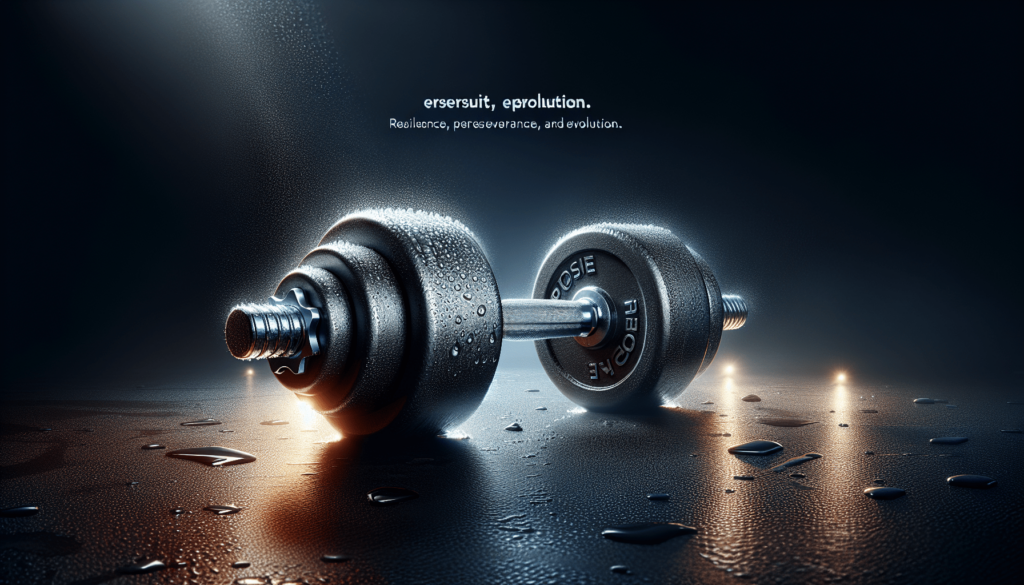
What Is The Ideal Weight Volume Per Workout/weight Training Session?
Let’s talk about the ideal weight volume per workout or weight training session. When it comes to effective weight training and optimum muscle growth, finding the right balance is crucial. But how much weight is enough? Well, we’re here to provide some context, but let’s make one thing clear – this is not medical advice. The ideal weight volume per workout or weight training session varies from person to person, depending on factors such as fitness level, goals, and overall strength. It’s important to listen to your body, consult a professional if needed, and gradually progress in order to avoid injury and achieve the desired results. So, let’s explore the ideal weight volume per workout – shall we?

Understanding Ideal Weight Volume
The Concept of Ideal Weight Volume
Ideal Weight Volume refers to the amount of weight or load that an individual should lift during a weight training or workout session in order to maximize muscle growth and achieve their fitness goals. It is important to note that the ideal weight volume may vary for each person based on their individual characteristics, fitness level, and goals. This concept revolves around finding the right balance between the amount of weight lifted and the number of repetitions performed in order to stimulate muscle growth and avoid overtraining or injury.
Factors Influencing Ideal Weight Volume
Several factors can influence the ideal weight volume for an individual, such as their fitness level, body composition, previous training experience, and specific goals. Understanding these factors is crucial in determining the appropriate weight volume to ensure effective and safe weight training sessions. It is essential to consult with a fitness professional or personal trainer who can provide guidance and expertise in tailoring the ideal weight volume to an individual’s unique needs and limitations.
Determining Your Ideal Weight Volume
Consult a Fitness Professional
When it comes to determining the ideal weight volume for an individual, seeking the advice of a fitness professional can be highly beneficial. These professionals have the knowledge and experience to assess an individual’s physical capabilities, goals, and any potential limitations. By conducting a comprehensive fitness assessment, they can provide personalized recommendations and guidance on the appropriate weight volume to reach one’s desired outcomes.
Consider Your Fitness Level
Before embarking on weight training, it is important to consider your fitness level. Beginners should start with a lower weight volume to allow their bodies to adapt and gradually increase the load over time. On the other hand, more experienced individuals may be able to handle higher weight volumes due to their increased strength and conditioning. By assessing your fitness level, you can establish a starting point and make adjustments as you progress in your weight training journey.
Assess Your Goals
Understanding your fitness goals is another crucial aspect in determining the ideal weight volume. Are you looking to build muscle mass, increase strength, or improve endurance? Each of these goals may require a different weight volume to optimize results. For example, to promote muscle growth, a higher weight volume with fewer repetitions may be more effective. However, if your goal is to improve endurance, a lower weight volume with higher repetitions may be more appropriate. Knowing your goals allows you to tailor your weight volume accordingly.
Benefits of Using the Ideal Weight Volume
Promotes Muscle Growth
One of the primary benefits of using the ideal weight volume is that it promotes muscle growth. By incorporating the right combination of weight and repetitions, you can stimulate muscle fibers and encourage them to adapt and grow stronger. The ideal weight volume allows for a sufficient level of challenge to the muscles, triggering the process of hypertrophy.
Improves Strength and Endurance
Using the ideal weight volume can help improve both strength and endurance. By progressively increasing the weight volume over time, you can continually challenge your muscles and develop greater strength. Additionally, by incorporating higher repetitions with an appropriate weight volume, you can also enhance your muscular endurance, enabling you to sustain physical effort for longer periods of time.
Prevents Plateaus
Another advantage of utilizing the ideal weight volume is that it helps prevent training plateaus. Plateaus occur when the body adapts and becomes accustomed to a certain stimulus, causing progress to stall. By periodically adjusting the weight volume, you can keep challenging your muscles and avoid plateaus. This helps to maintain continuous improvement and ensures that you are constantly making progress toward your goals.
Potential Risks and Considerations
Risk of Overtraining
While utilizing the ideal weight volume is important for maximizing results, it is crucial to avoid the risk of overtraining. Overtraining occurs when an individual exceeds their body’s ability to recover from exercise, leading to diminished performance, increased risk of injury, and fatigue. It is important to listen to your body and provide adequate rest and recovery periods in between weight training sessions to prevent overtraining.
Avoiding Injury
Injury prevention is another important consideration when determining the ideal weight volume. Lifting weights beyond your capabilities or with improper form can increase the risk of strains, sprains, and other injuries. It is important to start with a weight volume that is manageable and gradually increase it as your strength and technique improve. Proper form and technique when lifting weights are crucial to minimize the risk of injury.
Individual Variations
It is important to acknowledge that the ideal weight volume can vary among individuals. Different people have different body compositions, strengths, and limitations. Factors such as age, gender, and previous injuries can also play a role in determining the appropriate weight volume. It is essential to listen to your body, work within your capabilities, and make adjustments based on your individual needs.

Finding the Balance: Volume vs. Intensity
Importance of Training Intensity
When considering the ideal weight volume, it is important to find the right balance between volume and intensity. Training intensity refers to the level of effort or resistance encountered during a weight training session. It is crucial to ensure that the weight volume utilized provides a challenging yet manageable intensity to effectively stimulate muscle growth and prevent plateauing. Finding the appropriate intensity ensures that you are not sacrificing form or risking injury.
Balancing Volume and Intensity
Volume and intensity should be balanced to optimize your weight training sessions. While higher weight volumes can lead to increased muscle growth, excessively heavy weights may compromise form and increase the risk of injury. On the other hand, using light weights with high repetitions may improve endurance but may not provide enough stimulus for significant muscle growth. The key is to find the balance that allows you to challenge your muscles while maintaining proper form and minimizing the risk of injury.
Sample Ideal Weight Volume Guidelines
Beginner Guidelines
For beginners, it is recommended to start with a weight volume that allows for proper form and technique while challenging the muscles. A good starting point is to perform 8-12 repetitions with a weight that feels moderately challenging. As strength and technique improve, gradually increase the weight volume while keeping the repetitions within the recommended range.
Intermediate Guidelines
Intermediate weight trainers can handle a higher weight volume, seeking to increase both strength and muscle size. It is advisable to perform 6-8 repetitions with a weight that is challenging but not compromising form. As progress is made, continue to increase the weight volume while maintaining the desired intensity and range of repetitions.
Advanced Guidelines
For advanced weight trainers, higher weight volumes with lower repetitions are often utilized to push the limits of strength and promote muscle growth. Ranges of 4-6 repetitions with maximum weight are common. It is important to approach this level with caution and ensure proper warm-up and gradual progression. Advanced weight trainers should also consider periodizing their training to prevent plateaus and allow for recovery.
Tracking and Progression
Using a Training Journal
Tracking your weight training sessions in a training journal can be immensely helpful in determining your ideal weight volume. By recording the weight lifted, sets, and repetitions performed, you can track your progress over time and make informed decisions about increasing or adjusting the weight volume. A training journal also allows you to identify trends, strengths, and areas that may need improvement.
Periodizing Your Training
To prevent plateaus and continued progress, it is important to incorporate periodization into your weight training routine. Periodization involves dividing your training into specific cycles or phases, each with a focus on different aspects of strength, endurance, or muscle growth. Adjusting the weight volume during each phase according to the goals of that phase is essential for continued improvement and avoiding stagnation.
Adjusting Weight Volume Over Time
As you progress in your weight training journey, it is important to continually reassess and adjust your weight volume accordingly. This may involve increasing the weight lifted, modifying the number of repetitions, or changing the exercises performed. By regularly evaluating and adjusting your weight volume, you can ensure continued progress and prevent stagnation.
Variations in Weight Volume for Different Exercises
Compound Exercises
Compound exercises, such as squats, deadlifts, and bench presses, involve multiple muscle groups and joints. These exercises generally require a higher weight volume to effectively stimulate muscle growth and strength gains. It is important to ensure proper form and technique when performing compound exercises with heavier weights to avoid injury.
Isolation Exercises
Isolation exercises target specific muscle groups and involve movements at a single joint. Examples include bicep curls, tricep extensions, and calf raises. As these exercises focus on smaller muscle groups, the weight volume utilized is generally lower compared to compound exercises. However, it is still important to challenge the muscles adequately and adjust the weight volume based on individual strength and goals.
Accessory Exercises
Accessory exercises complement compound and isolation exercises and target smaller muscle groups or specific areas. These exercises, such as lateral raises, leg curls, or tricep dips, may require a lower weight volume compared to compound or isolation exercises. It is important to incorporate the appropriate weight volume to effectively target and strengthen the desired muscle groups.
Importance of Rest and Recovery
Incorporating Rest Days
Rest is a crucial component of any weight training program. Giving your muscles time to recover and repair is essential for growth and performance. It is recommended to incorporate rest days into your training schedule, allowing your body to recover from the stress and strain of weight training. Overtraining can lead to decreased performance, increased risk of injury, and hinder progress towards your goals.
Optimizing Sleep and Nutrition
In addition to rest days, optimizing your sleep and nutrition play significant roles in muscle recovery and development. Getting an adequate amount of sleep is essential for muscle repair and growth. Proper nutrition, including consuming enough protein, carbohydrates, and healthy fats, provides the necessary fuel and building blocks for muscle recovery. It is important to prioritize both quality sleep and a balanced diet to support your weight training efforts.
Conclusion and Final Thoughts
Importance of Individualization
When it comes to determining the ideal weight volume per workout or weight training session, it is important to consider individual factors, such as fitness level, goals, and limitations. The ideal weight volume may vary among individuals, and it is crucial to listen to your body, seek professional guidance, and adjust the weight volume accordingly. Balancing volume and intensity, incorporating rest and recovery, and making proper nutrition and sleep a priority are key elements in optimizing weight training sessions.
Experimenting and Adjusting
Weight training is a dynamic and evolving process, and finding the ideal weight volume often involves experimentation and adjustments. It may take time to find the perfect balance that challenges your muscles while minimizing the risk of injury. As you progress in your weight training journey, periodically reassessing and adjusting the weight volume based on your goals, progress, and individual needs will ensure continued improvement and success. Remember, finding the ideal weight volume is a personal journey, and it may require ongoing adjustments and modifications to achieve the desired results.



